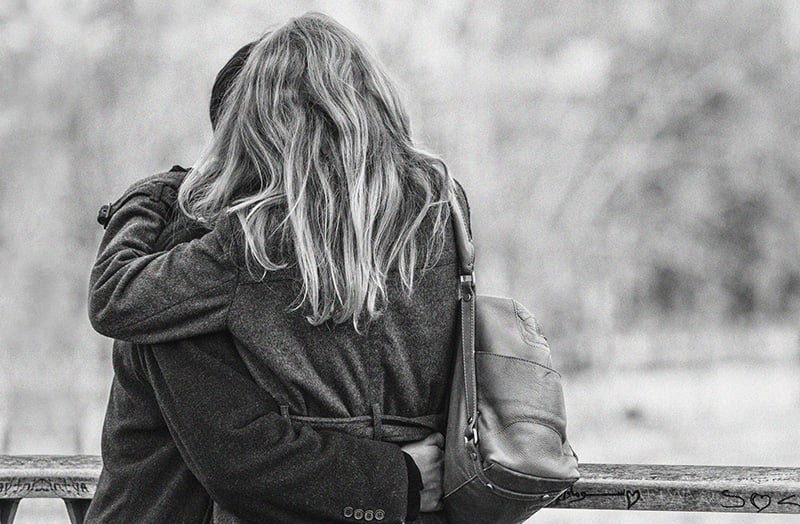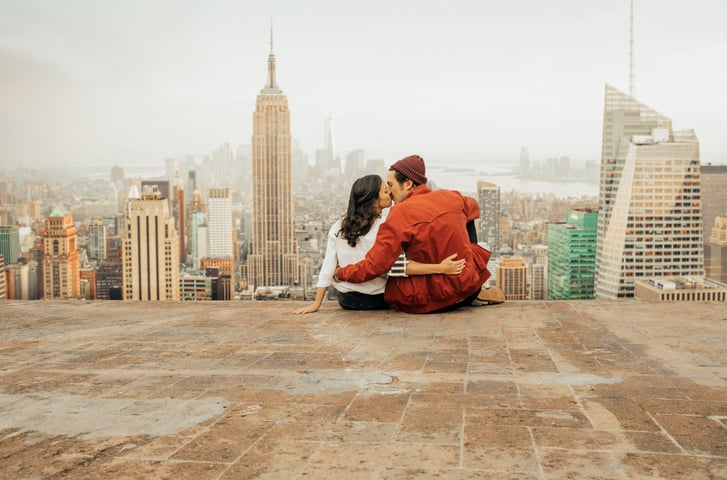
From confronting our climate crisis to imagining how to reinvent our streets to be safe for my kids and all New Yorkers, the challenges can feel overwhelming. But what if we slice up this apple?
Greening our city — from livable streets to a sustainable future — can and must begin immediately. Big ideas that I strongly support such as the Green New Deal for New York City, require big, citywide policy changes, including state approvals; and areas of work close to my heart like investing in our parks and playgrounds, require citywide efforts. Yet there are plenty of actions we can start now at the neighborhood level.
The apple has already been sliced for us by dynamic and impactful non-profit groups in communities in Brooklyn, and around the city — and building on ideas from these groups, we’ve compiled a set of actions that, as I run for City Council in Brooklyn’s 39th District, I am ready to act upon to help create change at the neighborhood level: going big on rooftop solar energy; safer streets and pedestrian-first zones; reducing the carbon footprint of our food and waste; and accelerating the cleanup of toxic legacies in our backyard. These are actionable items to help those who call Park Slope, Windsor Terrace, Kensington, Borough Park, Gowanus, Carroll Gardens, Cobble Hill, and the Columbia Waterfront District home or who work, visit, or go to school there.
Solar roofs present a straightforward, win-win opportunity. The cost has been dramatically reduced, the technical issues have been solved, and we now have a number of installers with deep experience with New York buildings (including at least one company based in the 39th Council District).
What is now missing is an effort to put rooftop solar right in front of people’s noses. Big, transformative ideas like public renewable utilities and large-scale offshore wind are worthy, but will take time and require state approvals. All the tools to dramatically increase rooftop solar are available but need to be taken to scale: a door-to-door campaign to sign up for solar, a “public option” for community solar for renters, and financing tools to eliminate upfront costs. I’m especially excited about job training programs for solar installation as a pathway to the middle class.
There are just as many actionable ways to move forward on safer streets. I walk and bike with my kids around Brooklyn. My picture of a cyclist isn’t a super-athlete, it’s a parent ferrying kids, a delivery person, or my 76-year-old father who still criss-crosses the city on two wheels, with his new hip.
We need to transform how we protect our cyclists, strollers, seniors, and pedestrians—and how we reimagine public streets as public spaces. Our term-limited Council Member Brad Lander has shown that a local Council member can make a difference.
I’d build upon that track record by focusing enforcement and design solutions on the most dangerous intersections. I’d be a champion for going further to create and sustain public spaces for play, outdoor schooling, restaurants, culture, retail and community gatherings. In 2022, I’d work to make sure there is an on-going “open street” in each neighborhood and pilot a multi-block “pedestrians-first zone” in one neighborhood.
And let’s make it easier, more accessible and more affordable to get around our city—expanding Citi Bike throughout Kensington, each year rolling out a neighborhood bike network safe for ages 8 to 80, and invest in programs that make it easier for everyone to have and safely secure a bike.
We can immediately do better on waste and our food systems, areas where the last year has seen our city going backwards. It was a real blow to lose curbside collection of composting. I am grateful that community-based composting organizations rallied to preserve drop-off sites. But we can get the municipal program back on its feet in a cost-effective way through block-by-block outreach and complement it by making textile and e-waste recycling available to every block. At the same time, let’s pilot a containerization program on a commercial corridor to eliminate trash bag piles.
The cooperative economy also offers solutions. Food coops, mutual aid networks, and “buy nothing” groups provide a growing constituency to go to scale on reducing our consumer carbon footprint. I’ve spent two decades creating organizations that use social capital and collective effort to create big change and would help support and connect these newer and more established cooperative models to see what we really can accomplish together.
Finally, this isn’t limited to our district but there is a unique opportunity for us to go big on accelerating the cleanup of toxic legacies in our own backyard. The Gowanus Canal has been burdened by a historic legacy of toxic industry, with added pollution from combined sewage overflows (CSOs) into the canal from the city’s sewers everytime it rains. The work led by Rep. Nydia Velazquez and the EPA under the Superfund program deserves to be done as quickly as possible. Together we can move quickly on the city’s commitments to reduce CSOs and ensure sites are cleaned up to appropriate standards safe for residential uses.
And I recommit to the deal-breaker conditions for investment in NYCHA and environmental justice goals set by the Gowanus Neighborhood Coalition for Justice for any forward movement on the Gowanus Rezoning. Regardless of what happens with the rezoning, cleaning the Gowanus and supporting it as a vibrant, sustainable, and mixed-use neighborhood is a generational project that requires ongoing engagement and leadership.
As we’ve seen even in the worst of this pandemic, local partnerships can have impact faster than waiting for broader policies. One example: A group of neighbors and I came together to establish and expand the Camp Friendship Food Pantry last May, and we now serve hundreds of families each week.
As a City Council member, of course I would use local laws, land use review, and oversight as powerful tools — but to be truly effective, Council members also must use the soft powers of the office: convening local groups, providing a base for organizing around solutions, and bringing people together to solve problems. I’d build on my 20 years of experience as an organizer and institution builder to convene, innovate, and empower to make real headway on climate and safe streets in 2022, and contribute to greening our district, our city, and our future.
When the city began the curbside composting pilot, our building didn’t immediately qualify. I had to research the program, bring it to the co-op board and get buy-in. People were hesitant: Would it lead to more rats? A cluttered garbage area? What if we didn’t compost correctly? With the help of the organics program of the Department of Sanitation, we answered all these questions and opted in as a trial run.
Years later, when the city ended the program, several neighbors who had initially been hesitant came to me: “Justin, you know city government. How do we get composting back?”
The only way we do anything worthwhile: Together.
*Ideas in this column have been drawn from the tremendous work of a range of local organizations — culled from the public reports and programs and numerous direct conversations — including the Gowanus Neighborhood Coalition for Justice, Solar1, the Gowanus Canal Conservancy, BIG Reuse, The HOPE Program, Families for Safe Streets, Transportation Alternatives, the Riders Alliance, the Pratt Center for Community Development, Park Slope Neighbors, Sustainable CUNY, Lower East Side Ecology Center, and more that tackle these issues everyday.
***
Justin Krebs is a progressive organizer, leader of National Campaigns at MoveOn, and a Democratic candidate for City Council in Brooklyn’s 39th District. On Twitter @justinmkrebs
—
This post was previously published on Gotham Gazette with a Creative Commons License.
***
You Might Also Like These From The Good Men Project
 Compliments Men Want to Hear More Often Compliments Men Want to Hear More Often |
 Relationships Aren’t Easy, But They’re Worth It Relationships Aren’t Easy, But They’re Worth It |
 The One Thing Men Want More Than Sex The One Thing Men Want More Than Sex |
 ..A Man’s Kiss Tells You Everything ..A Man’s Kiss Tells You Everything |
Join The Good Men Project as a Premium Member today.
All Premium Members get to view The Good Men Project with NO ADS.
A $50 annual membership gives you an all access pass. You can be a part of every call, group, class and community.
A $25 annual membership gives you access to one class, one Social Interest group and our online communities.
A $12 annual membership gives you access to our Friday calls with the publisher, our online community.
Register New Account
Log in if you wish to renew an existing subscription.
Need more info? A complete list of benefits is here.
—
Photo credit: iStock
The post Four ‘Simple’ Things We Can Do Now for a Greener, More Livable Community appeared first on The Good Men Project.
